Mamry - The Beginning
We’ve met on a boat – mutual friends persuaded us to join a four-day sailing trip. A six-meter Venus, owned by Kamil's parents, took us from the Skłodowo port on the lake Mamry, through Sztynort, to lake Dobskie. Weather conditions were variable – from calm to stormy. We had the chance to see that we got along well in sudden events and in boredom, and that’s how it stayed. For the next 4 years, we sailed occasionally on the Masurian lakes and grew the desire to test ourselves on larger bodies of water.
Zuza had only freshwater sailing experience, while Kamil sailed the sea to log hours for a marine skipper – he had sailed on Zawisza Czarny and Śmiały and read many technical books about the pros and cons of different types of yachts, including "Sailing in Adverse Conditions" by Adlard Coles and Peter Bruce and "Seaworthiness: The Forgotten Factor" by Czesław Marchaj.
We started looking for a yacht. As seaworthiness was our top priority, we wanted a full-keel one, round-bottomed, with not too flat hull cross-section. We also wanted the rudder to be connected directly to the keel. This reduces the risk of the rudder getting entangled in floating lines, fishing nets, or other similar obstacles we might accidentally encounter. As there were only two of us and despite efforts, we couldn't expand our family, the yacht didn't need to be big. As it turned out later, this brings considerable savings in harbor fees, especially when we can take spaces too small for most vessels. Eventually, we’ve found an Albin Vega imported from Sweden from 1974 – the boat had a complete set of new sails (mainsail, two jibs, genoa, and spinnaker) and a hull in good condition, freshly painted with anti-fouling paint. We didn't know about the osmosis problem back then, so we didn’t check it but happily it wasn’t there and hasn't appeared to this day. Unfortunately, the propeller extends beyond the rudder, making maneuvers in reverse difficult and potentially easier to entangle, but we accepted that. Until now it has never caught any line even when we passed over it with the engine on.
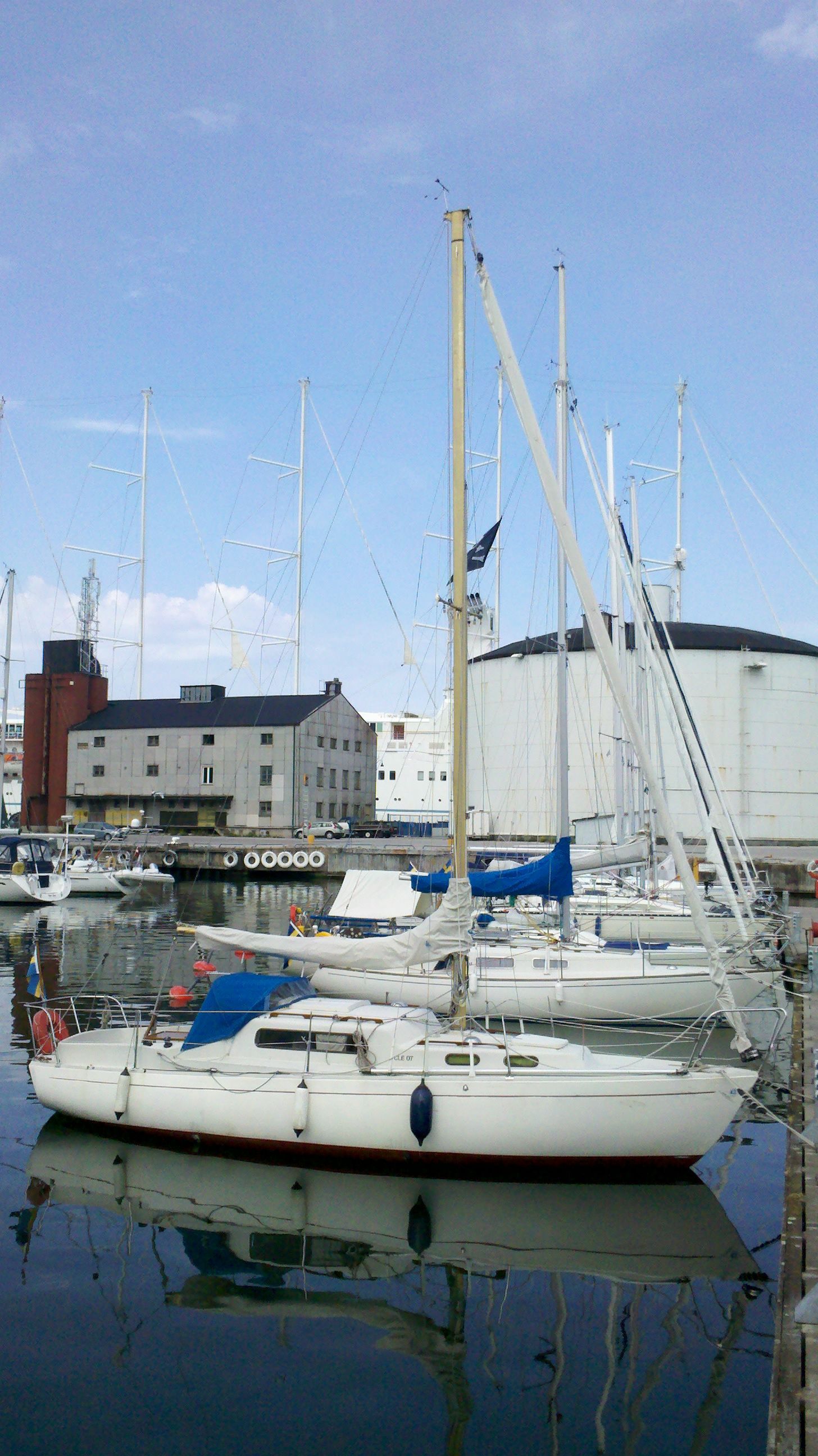
As for technical devices we had a log and a depth finder. A family acquaintance was just selling his yacht—it was slightly cheaper, very well-maintained, and theoretically better equipped with electronics. However, Kamil insisted that the Albin had better seaworthiness, and old electronics were worth little. He was so stubborn about it that the boat was named "Stubborn." We later frequently appreciated the advantages of piloting a high-seaworthy yacht.
There is a v-berth that accommodates two and a half people. For smaller clothes like underwear and T-shirts we hung hammocks along the sides of it —this saves space, and the clothes are within reach and well aired.
Behind the v-berth, we have two wardrobes, a toilet, then two bunks on the sides; behind them, there is a stove on the port side and a sink with salty and fresh water faucets on the starboard side. In the passage between the bunks, there is space for a table—during sailing, the tabletop is hung on special hooks above the v-berth, and the legs are stowed in one of the lockers. When stationary, the same table can be placed in the cockpit.

Under the v-berth there is a 60-liter water tank. There are also many compartments, cubbyholes, cabinets, etc. Per Brohall, who designed this boat, sailed it himself. This allowed theoretical ideas to be refined by practice. It was the first mass-produced laminate boat and enjoyed great success in its homeland - the Albin Martin shipyard produced almost 3,500 units. To this day, Vegas have their loyal fan clubs in their native Sweden, Poland, the United Kingdom, and other countries. An advantage is the relatively good availability of spare parts.
24.07.15 - 15.08.15 Łeba-Łeba, paper map, pencil, and first steps
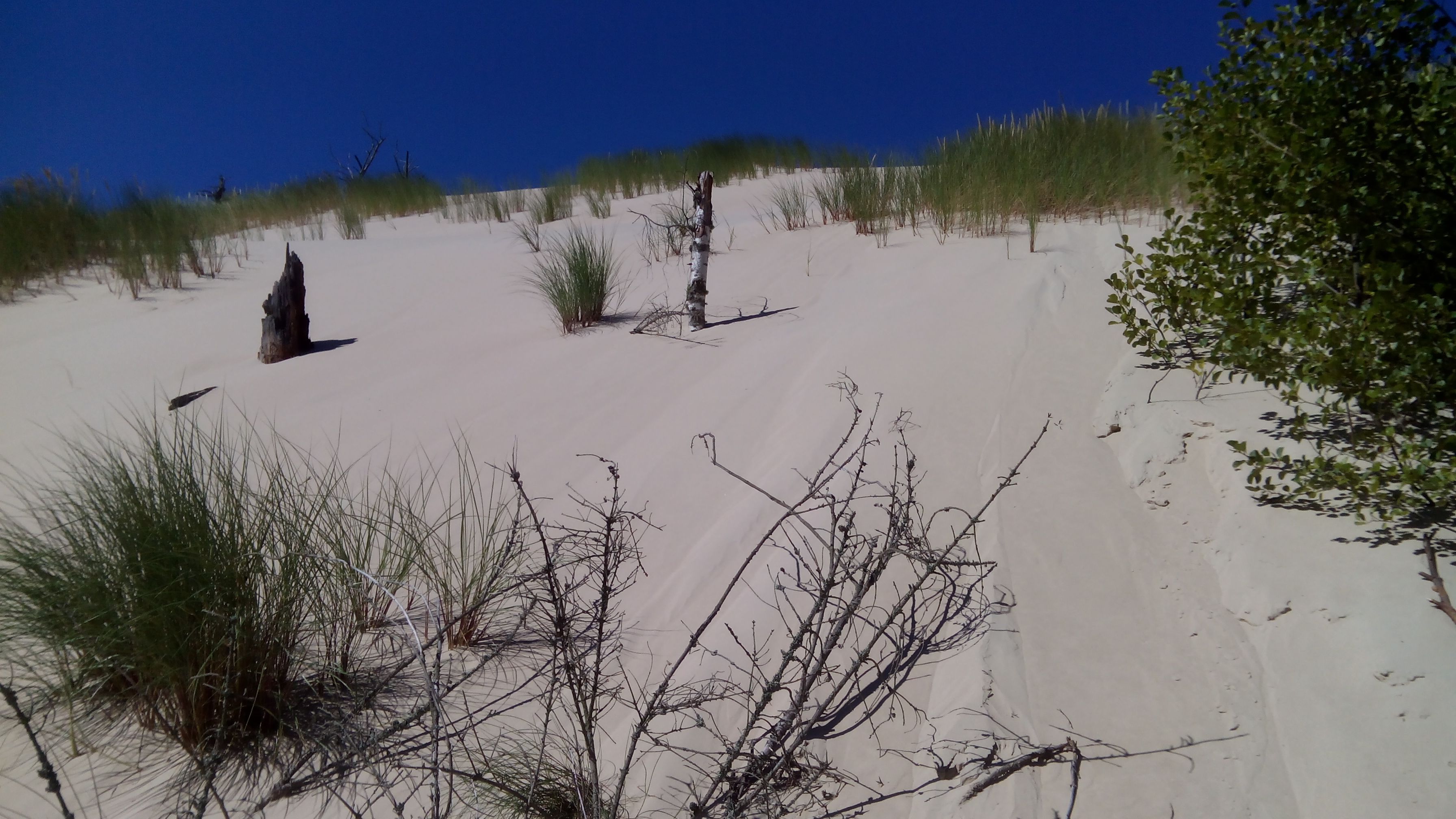
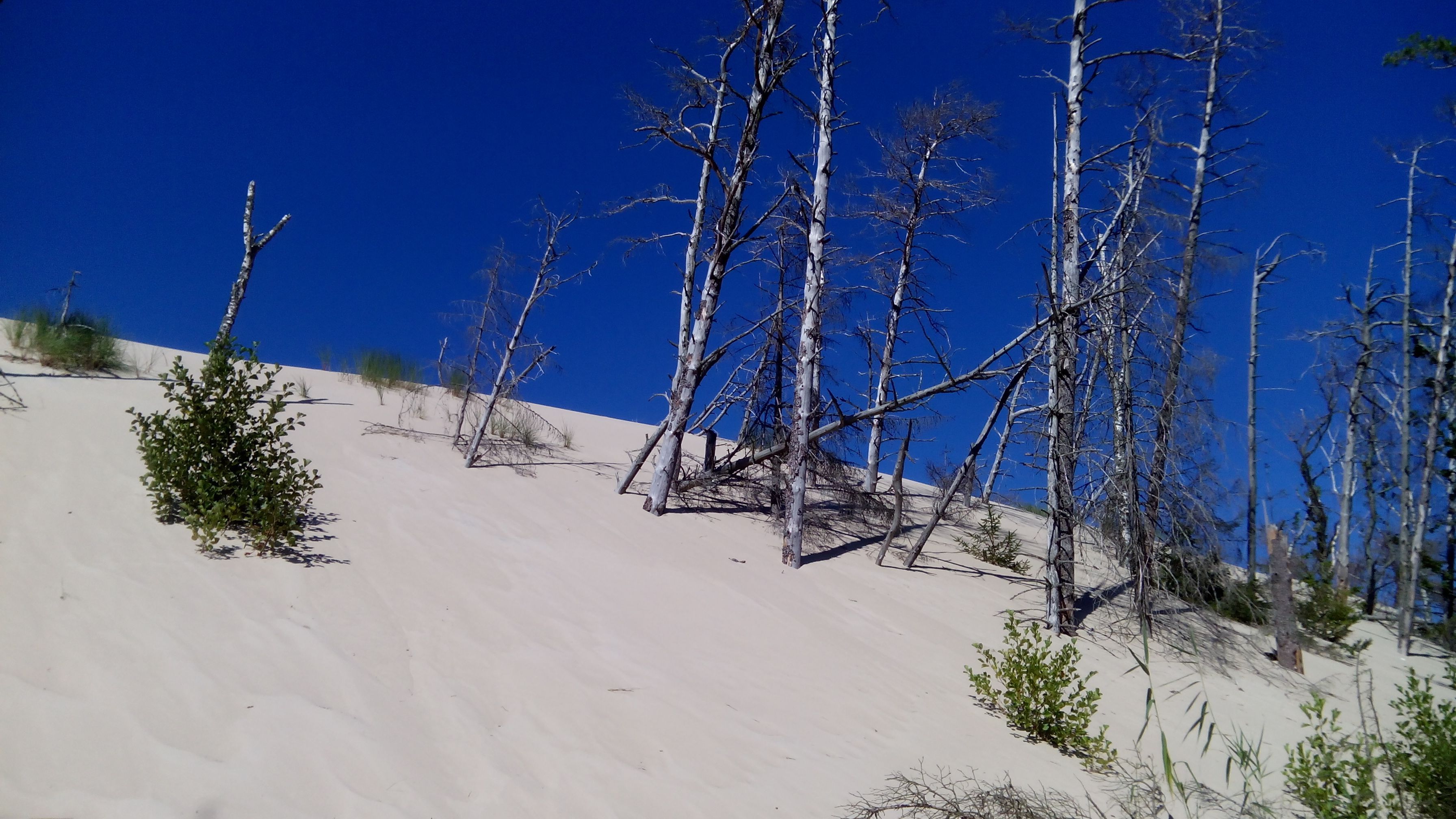

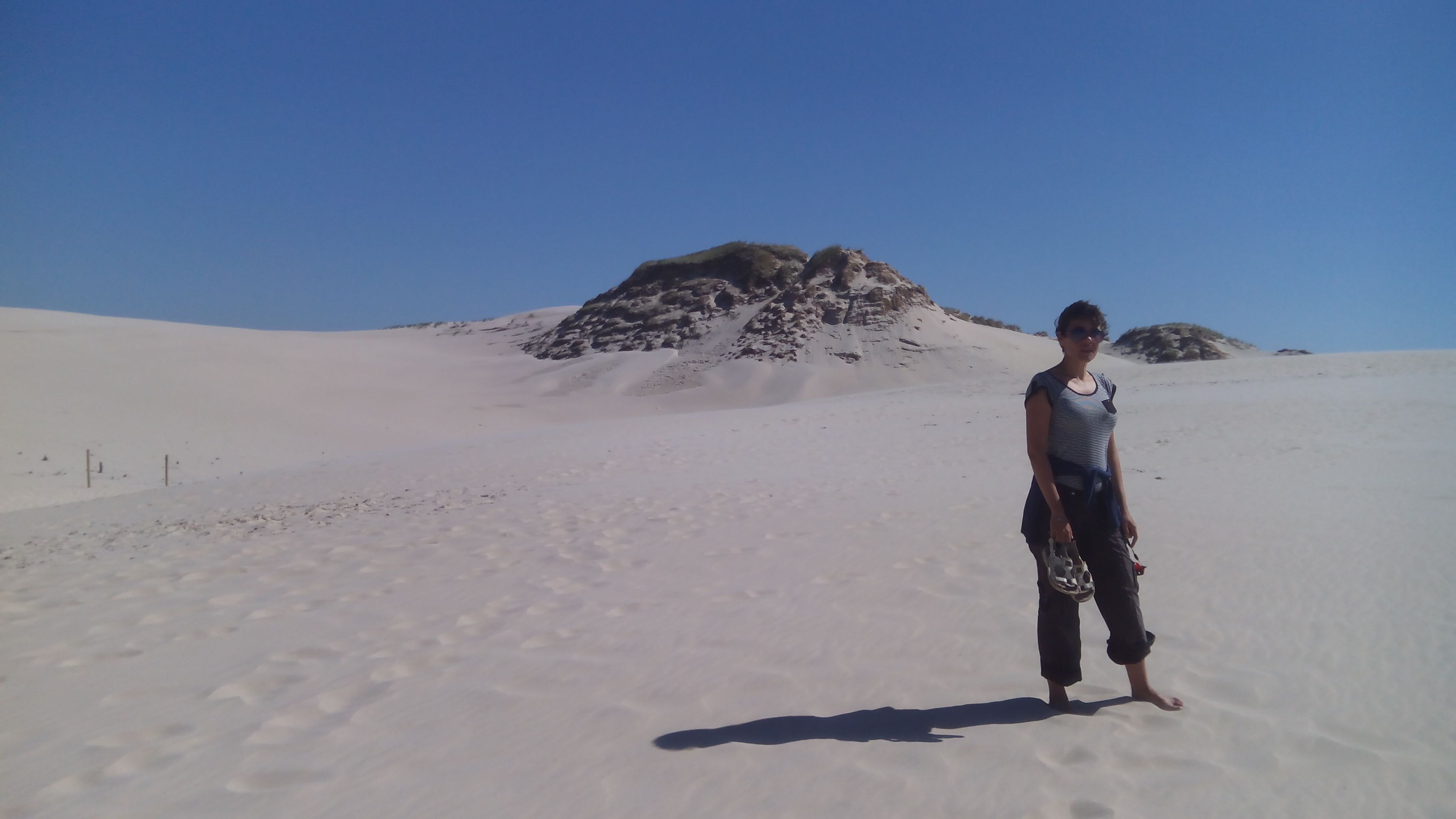
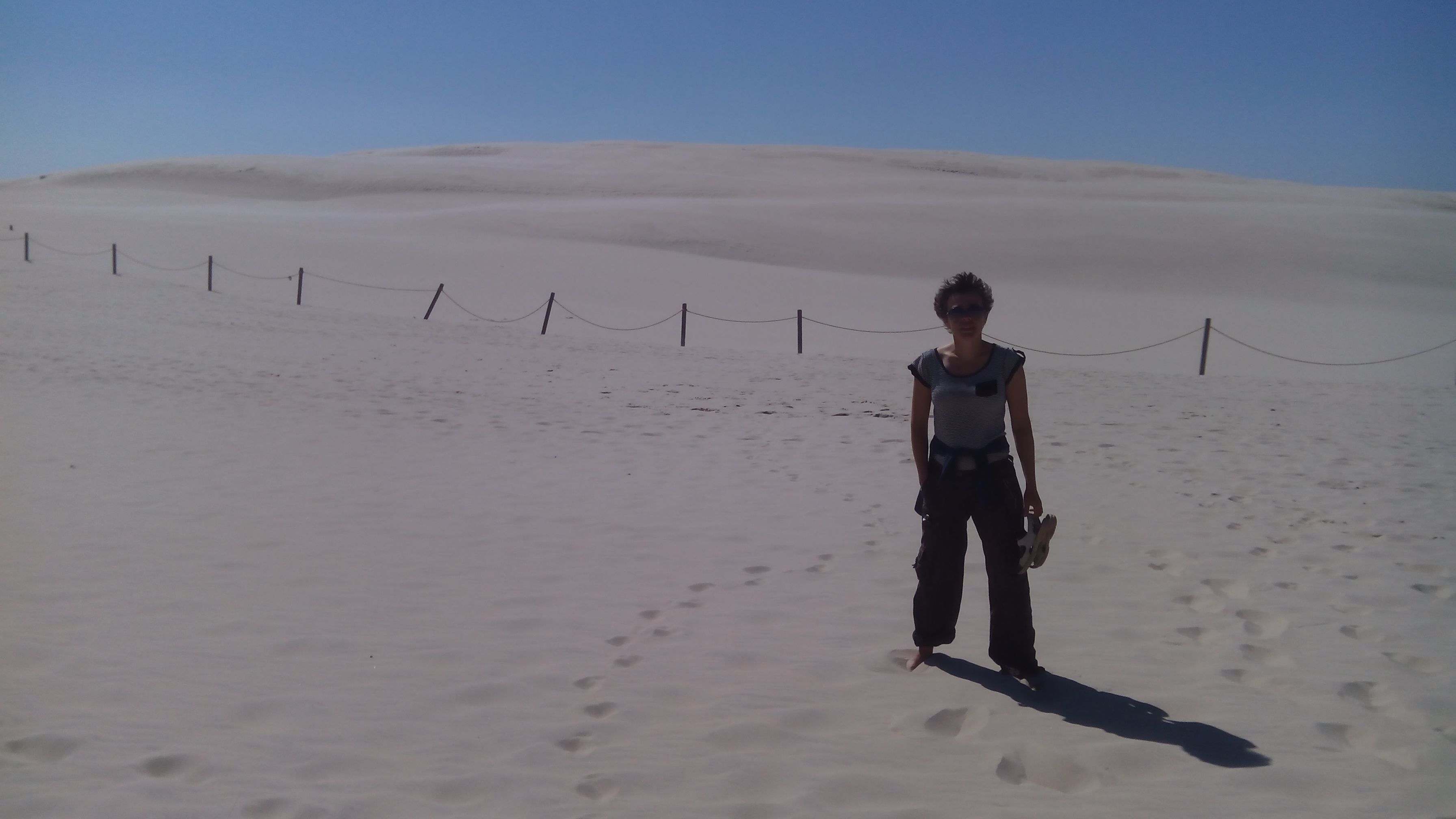
And so, on July 28, 2015, we set off on our first voyage. The destination of the journey was the island of Bornholm. It was only when setting sail that Zuza began to wonder how she would cope with seasickness. It turned out that she suffered from it for a few days, but it was bearable. Armed with Jerzy Kuliński's guidebook, binoculars, paper maps, a navigational compass for measuring distances on the map, rulers, and GPS on a mobile phone, we set off on our way.
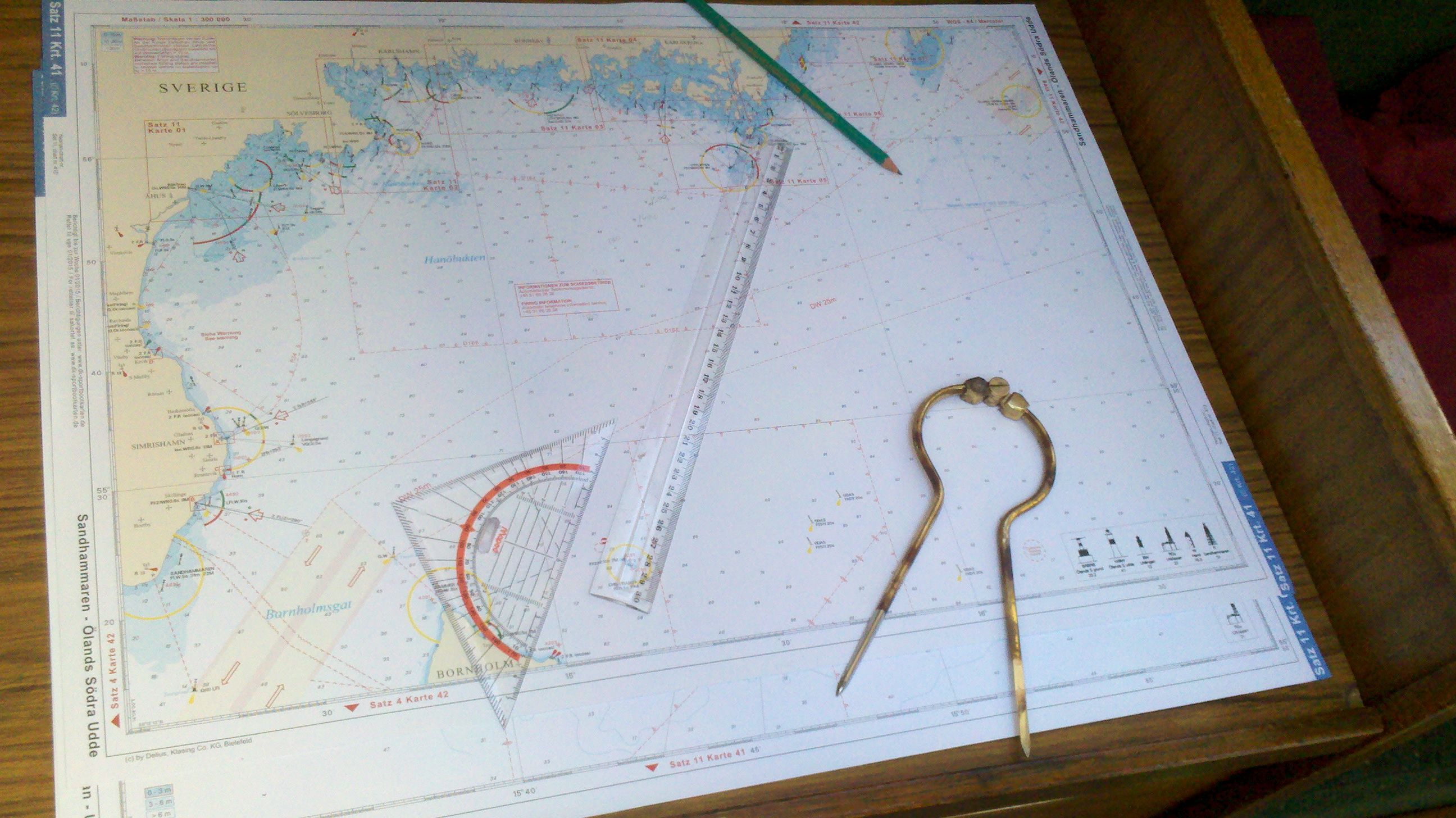
Although we set sail at 4:00 AM from Łeba, we reached Ustka only at 1:00 AM. On the way, the starboard spreader folded upwards. We changed tack and managed to hook it somehow by throwing a line and pulling it to level, and later in the port, we installed lines to prevent it from folding again. It was the first time we began to wonder how to climb the mast at sea to be able to repair such failures.
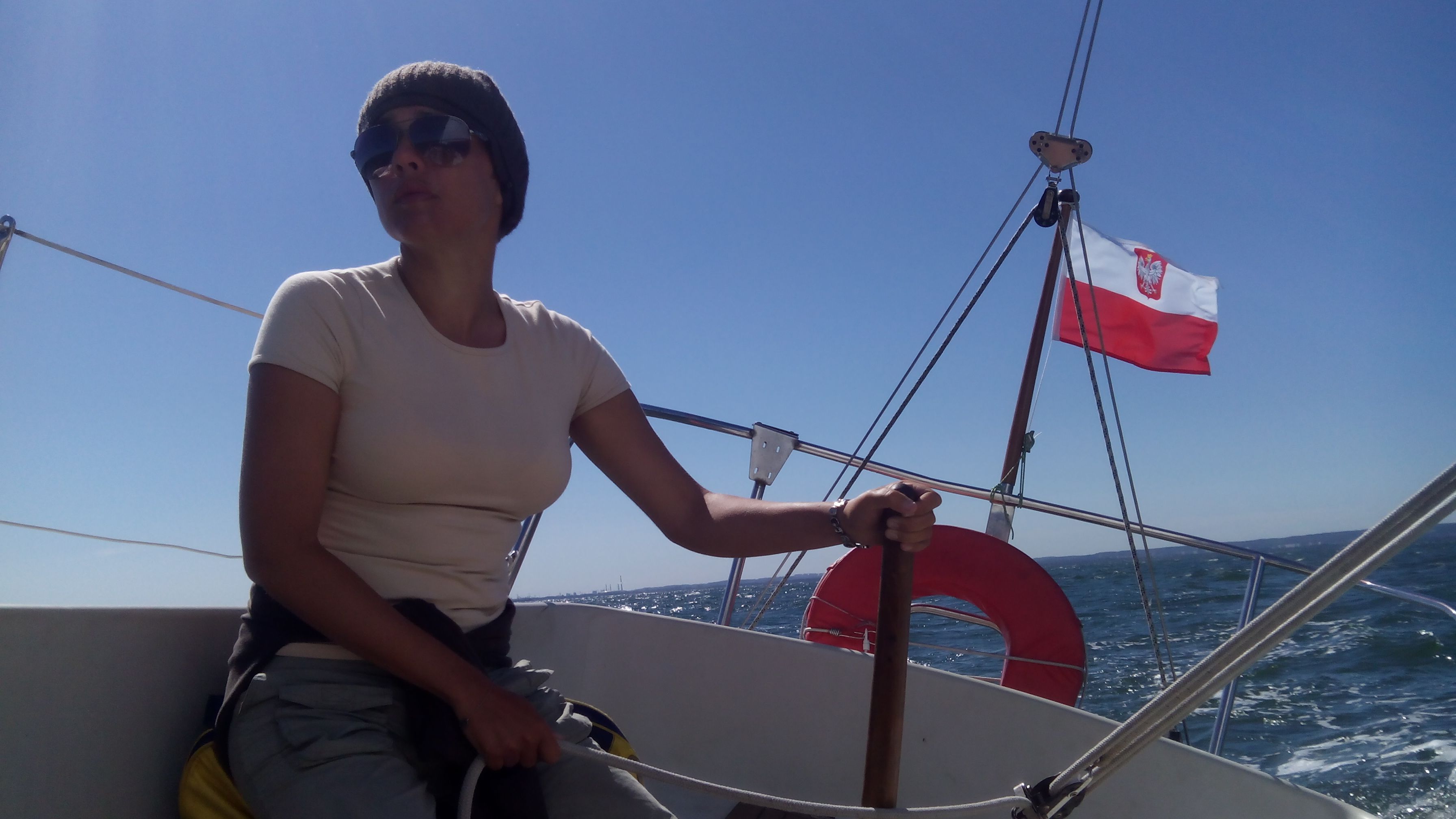
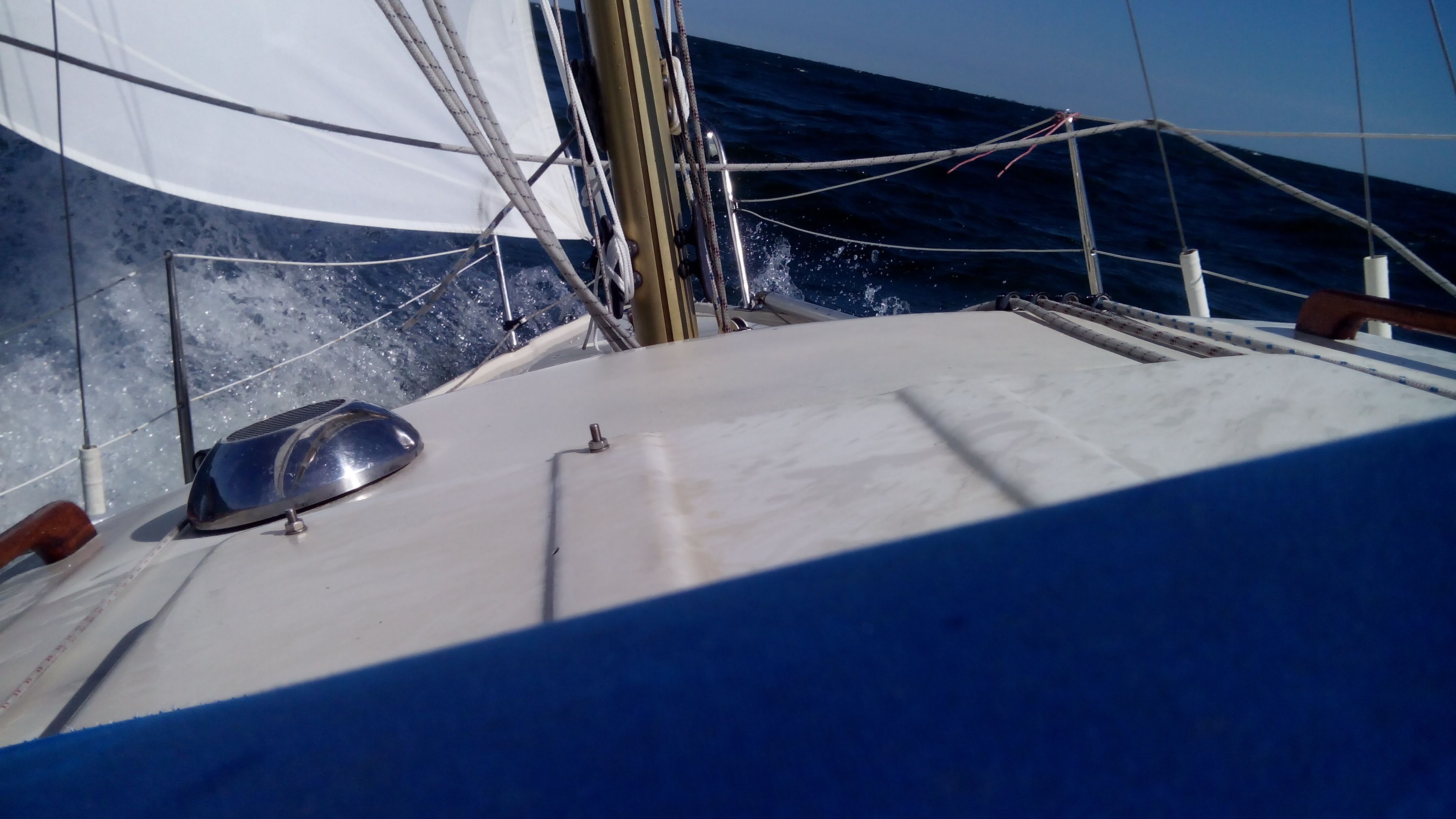
Entering the port in the darkness cost us some nerves, but it went without any issues. The trouble began the next day when the wind started to blow—the swell entering the harbor channel rocked the boats significantly, and local sailors were retreating to a side basin. They offered us a spot, but we objected. The wind was already quite strong. We were unsure of the engine, and additionally, Albin boats are known for their rather unpredictable behavior in reverse. One needs considerable skill to steer the boat where desired. This is due to the propeller being placed behind the rudder and slightly angled (to avoid the rudder) instead of typically being recessed in the rudder. In our opinion, this is one of the few drawbacks that Vegas have. Over time, we learned how to perform maneuvers in reverse "with momentum," which in turn requires proper planning when braking. At that moment, Kamil decides that we will stay in the main channel. The boat shakes uncontrollably. Zuza gets seasick and has to get off on the shore, while Kamil fights hard. Sitting inside one can feel how were sides bending in being hit through our fenders. The effect of the storm is that we have completely worn mooring lines and one fender is completely damaged. A passerby laughs, were these bumpers meant for a kayak?
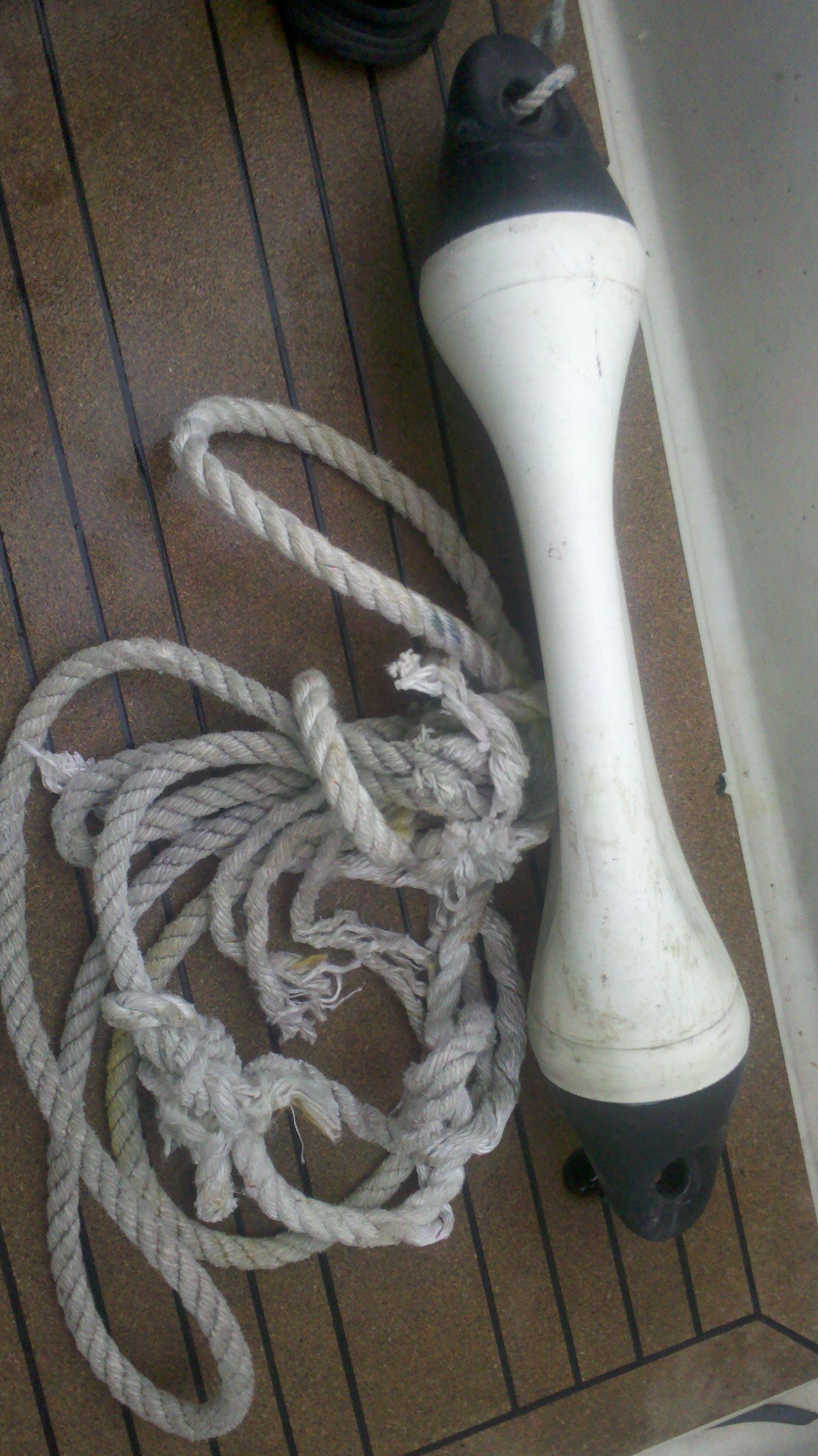
The next day, we set off for Bornholm. The island has an advantage of providing shelter practically regardless of wind direction (as long as the wind doesn't significantly change direction and create waves coming from various directions). Bornholm is very convenient in this regard because it has two large ports on opposite sides of the island. The wind is favorable, but we still approach Nexo in the darkness. Over time did we learn to plan so that we arrive at new ports during the day. In the morning, we run to the marine store and purchase decent, larger fenders and mooring lines with shock absorbers. The expense is significant, but they have served us well to this day.
We explore Bornholm—the weather is beautiful, and the island looks truly charming.
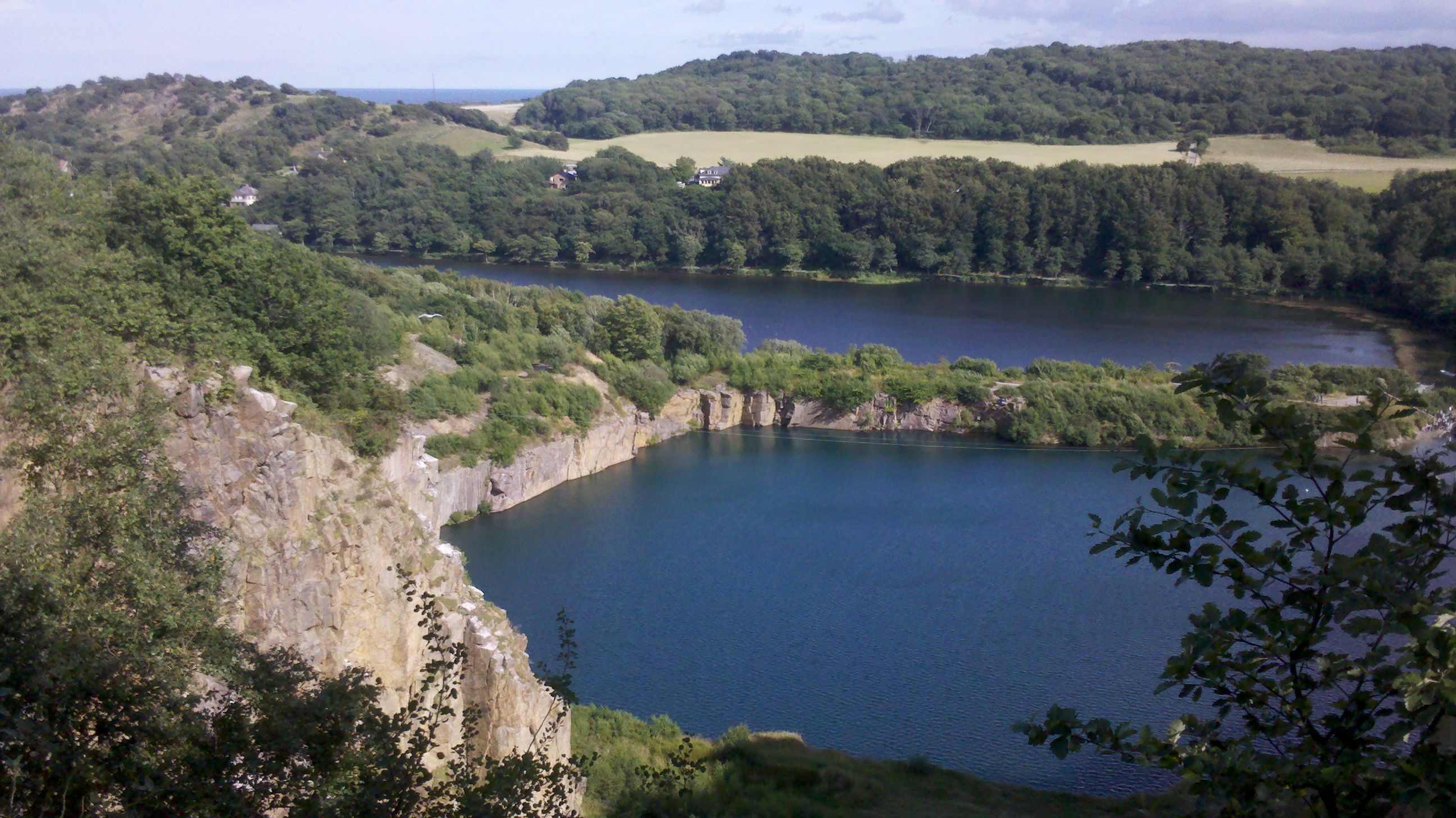
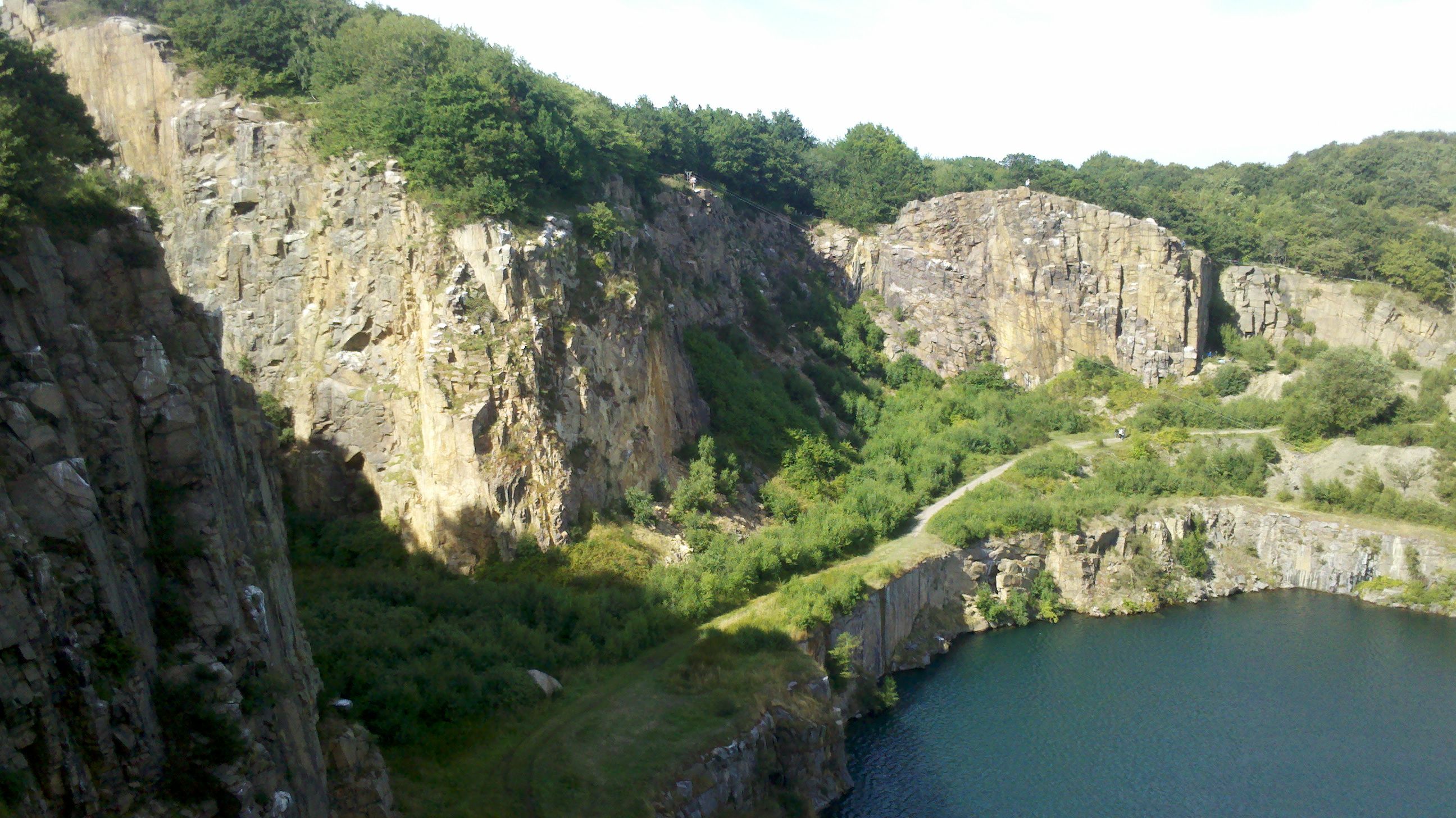
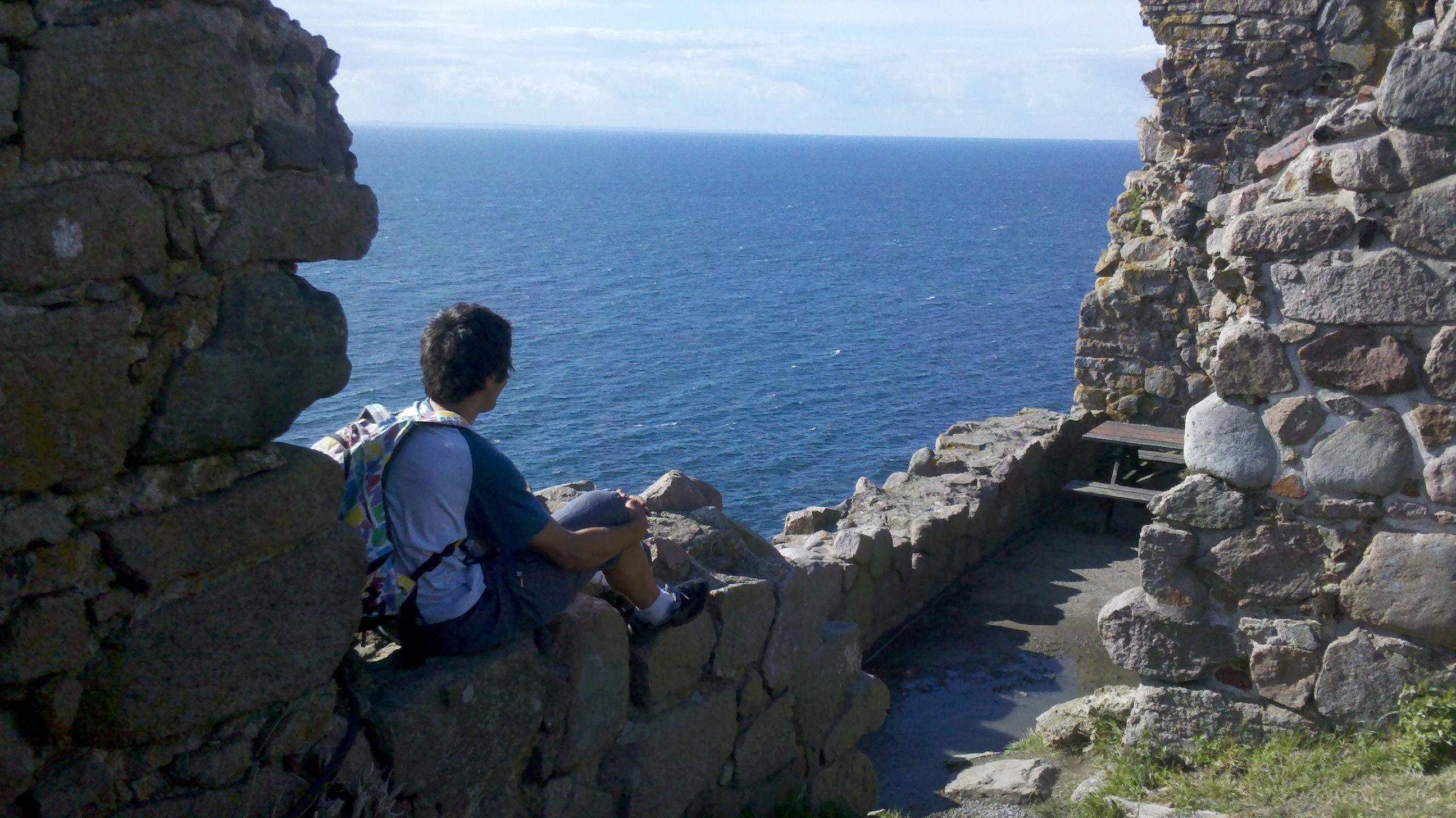
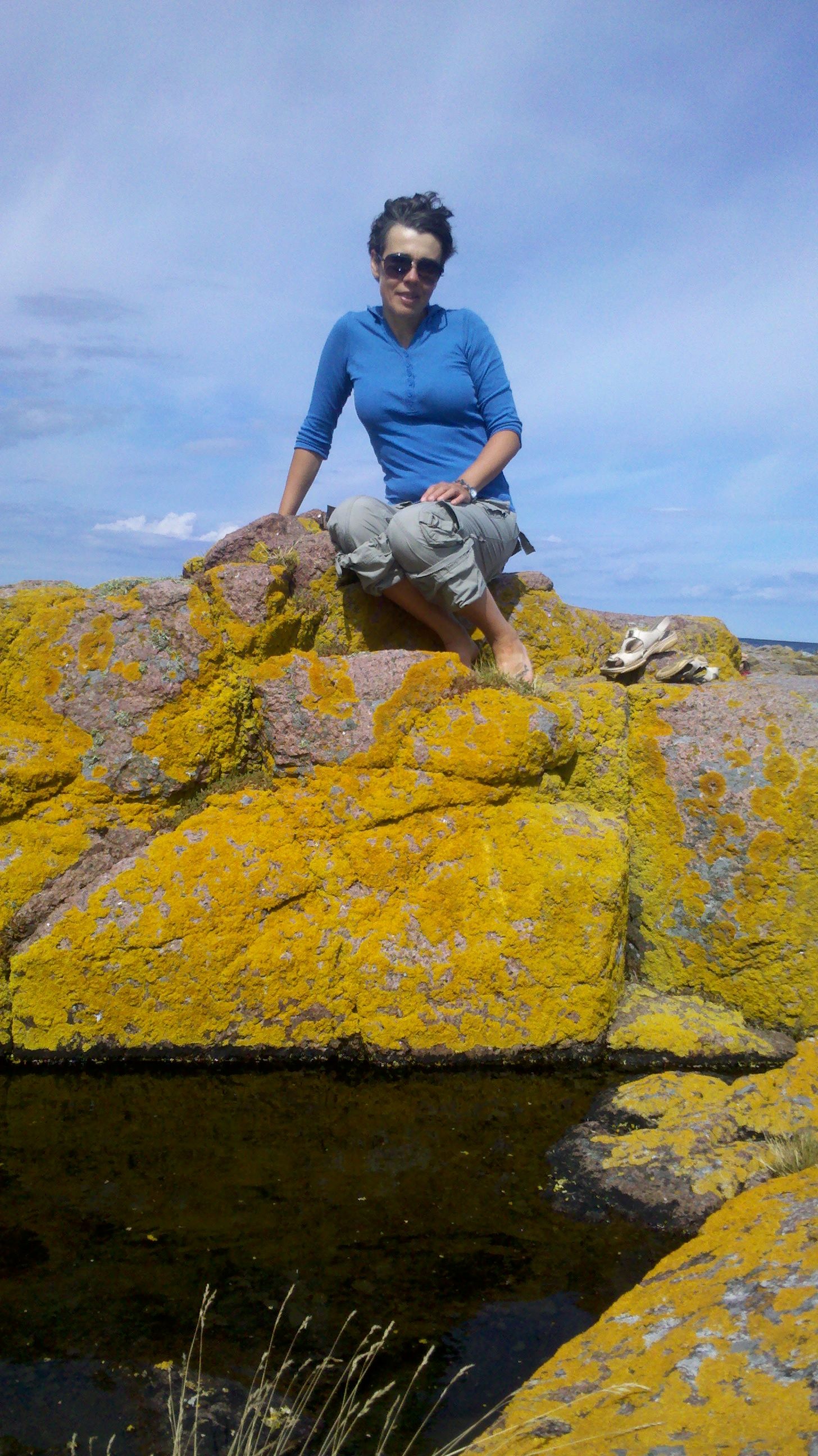
The next day is spent more productively. The cubbyholes in the main cabin were lined with something like oilcloth on sponge. It started to rot and peel off, so we’d bought cork panels in Poland and brought along on the voyage. In free moments, Kamil scraped the walls (which was a nasty job as the glue held firmly and the position for scraping is highly uncomfortable) and removed the old lining. The cork was then adhered to the cleaned surface. We are still very pleased with the result.
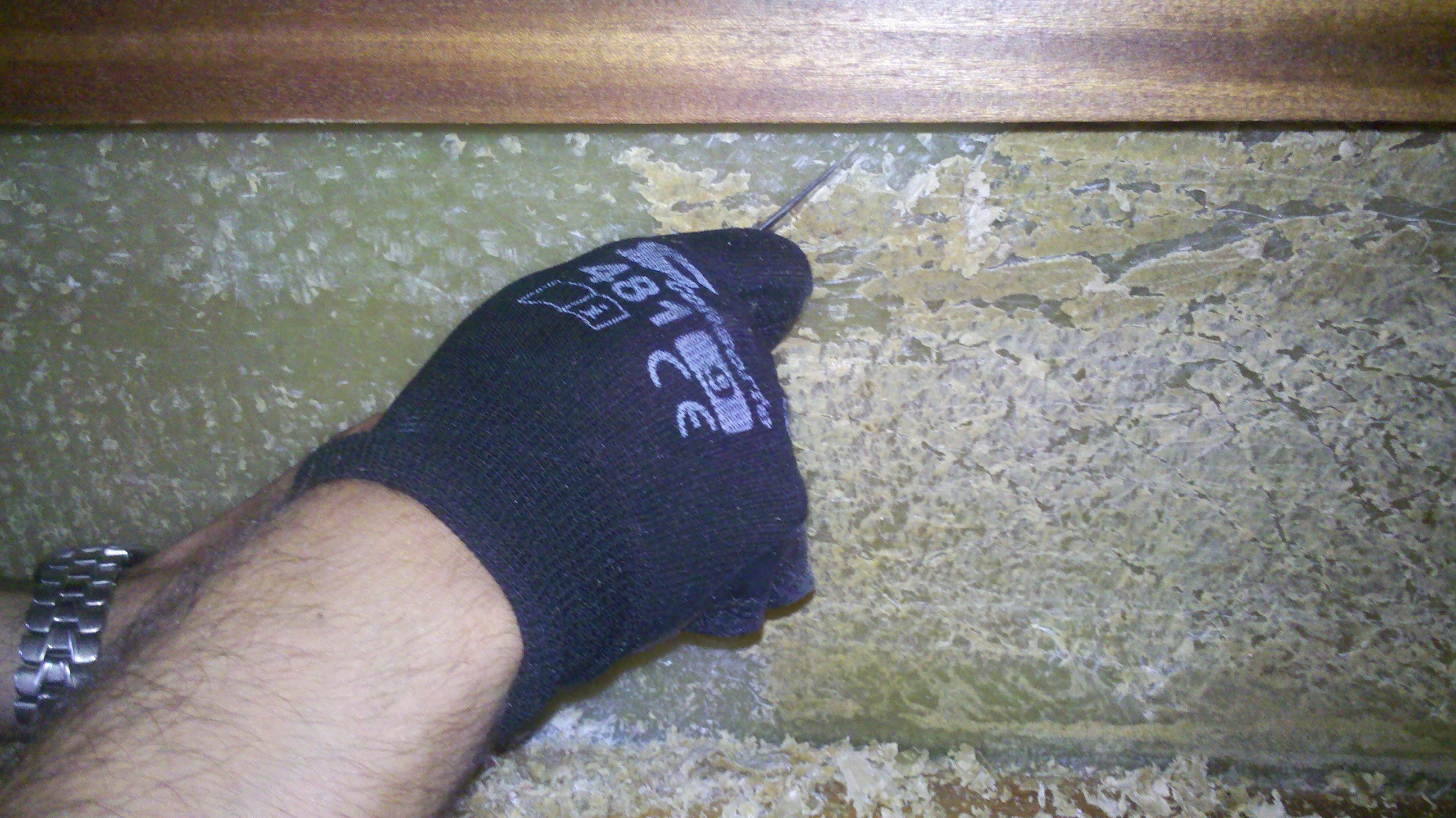
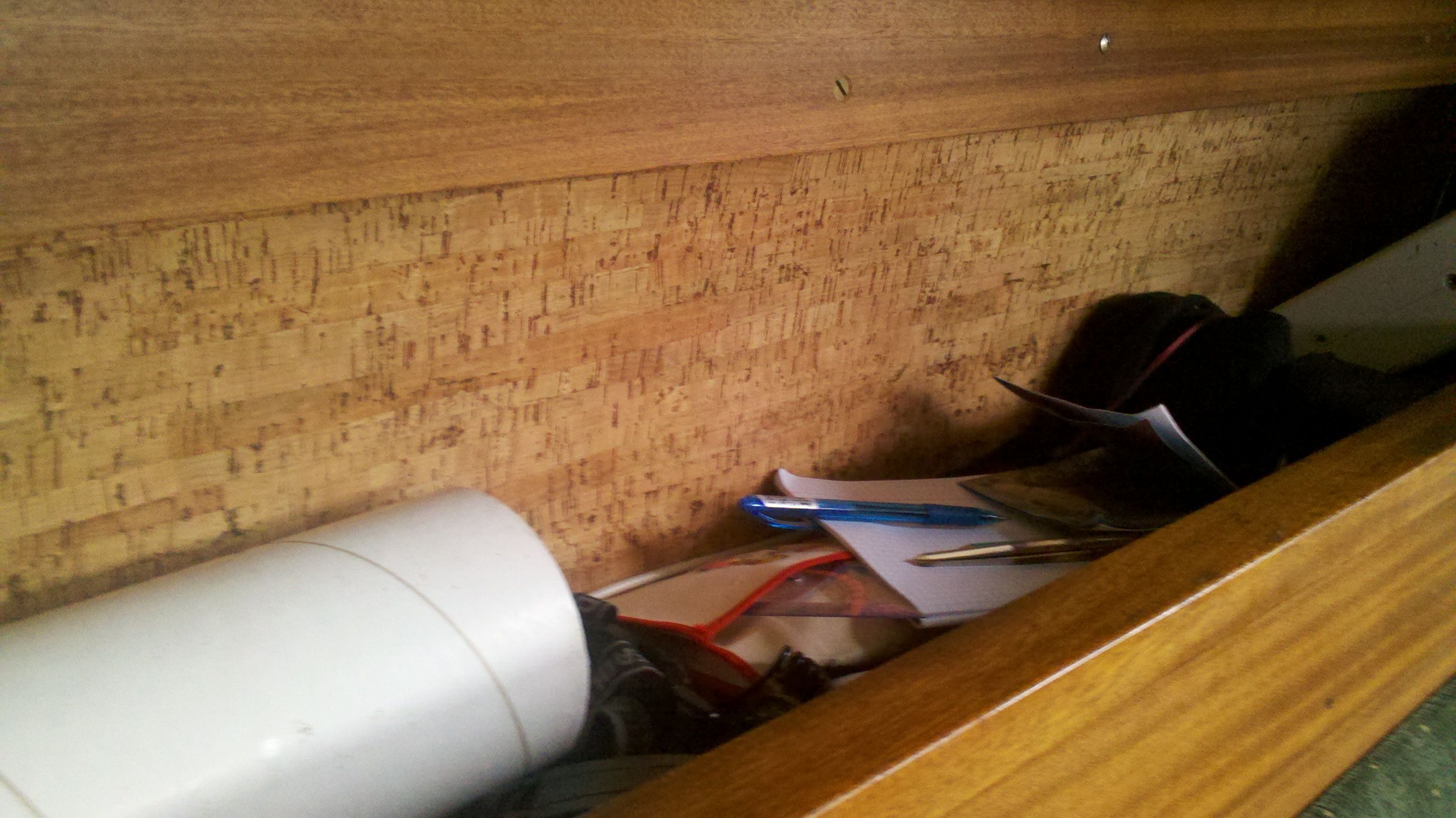
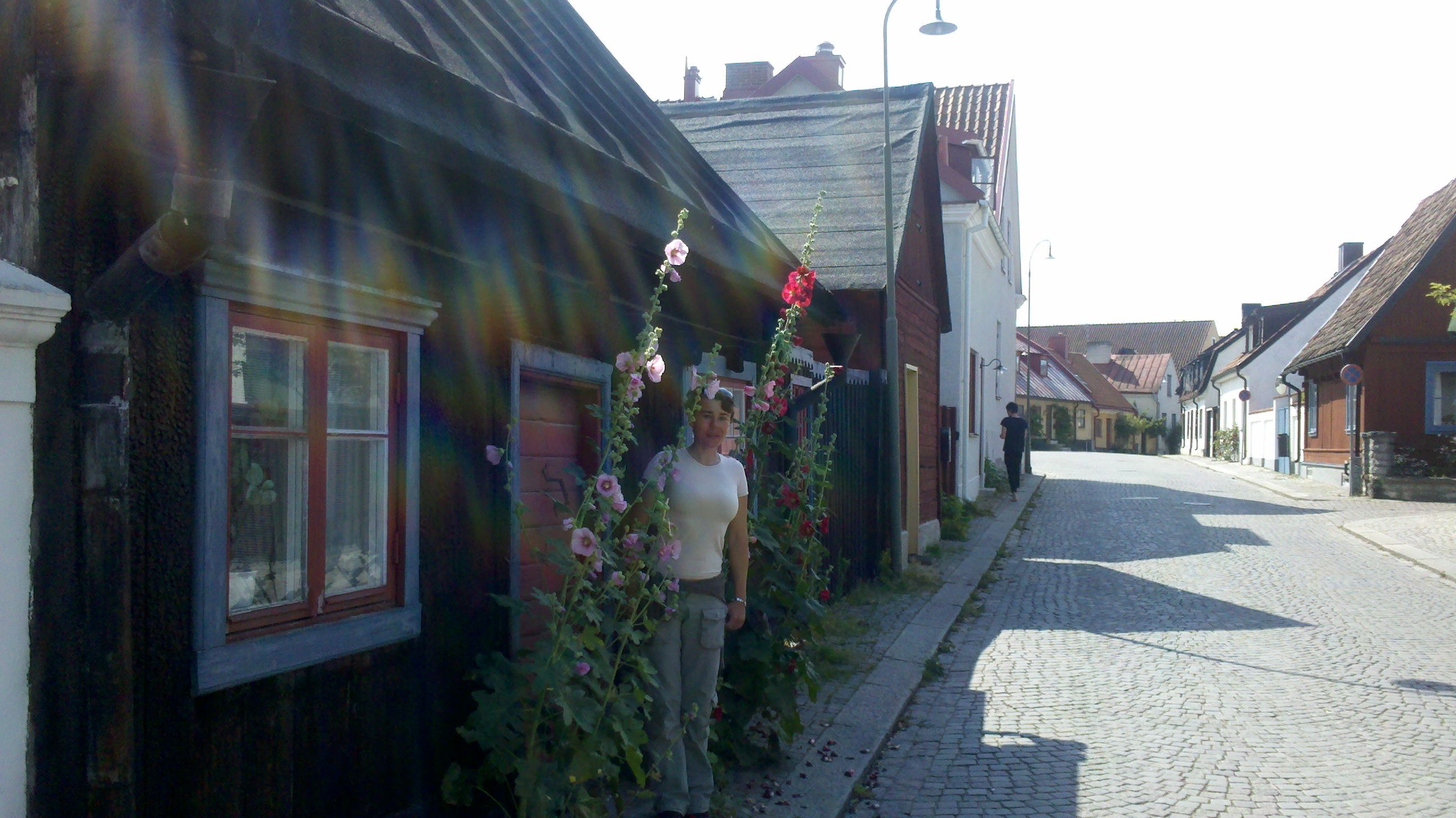
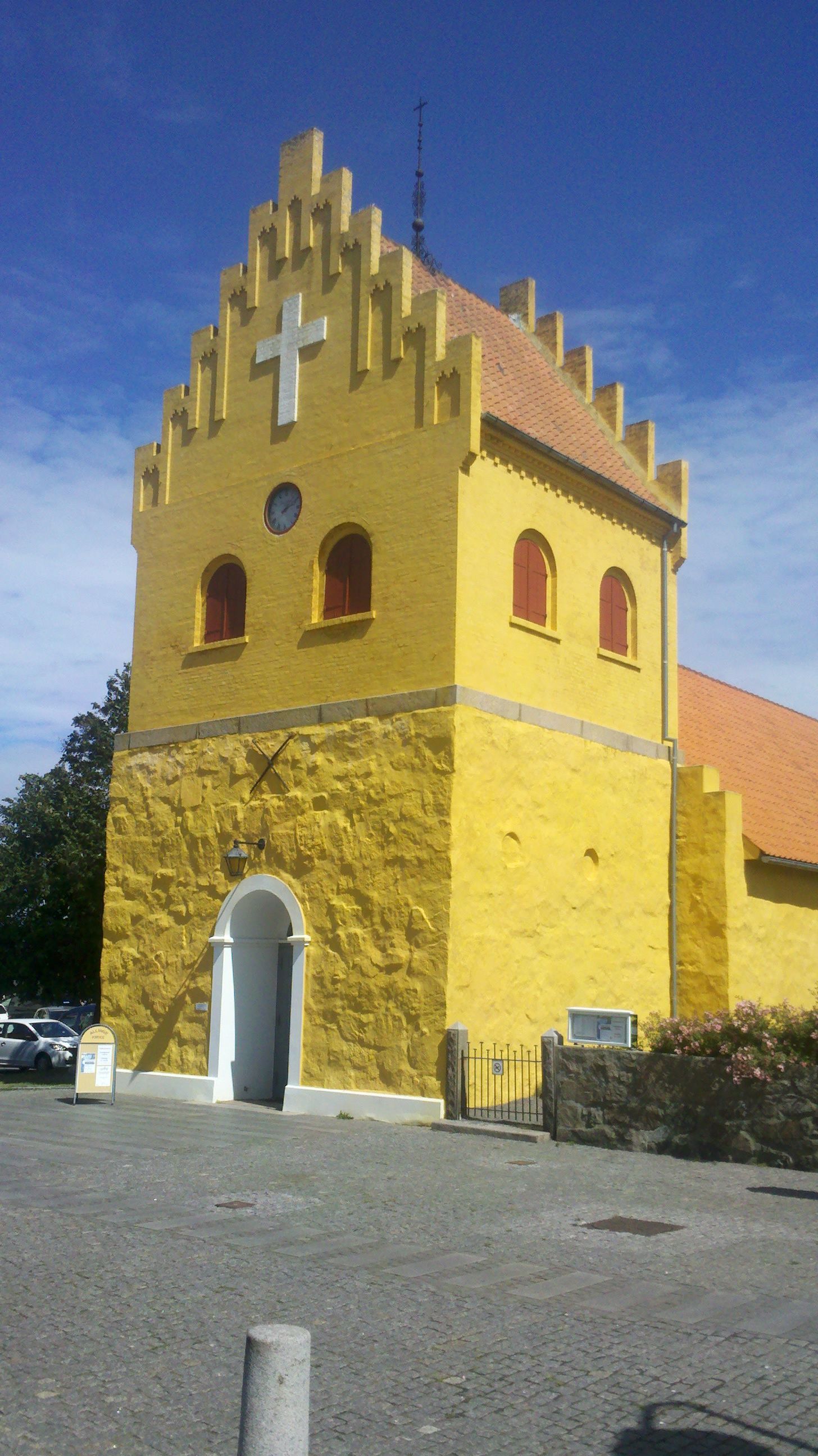
On the 1st of August we set off for Allinge – another port on Bornholm.
After five hours we are there. We fry a garfish, a fish with green bones that we managed to catch along the way, and go to sleep. Next morning we explore the town.

We really like the meticulously preserved old boats and sailing ships. We are struck by the number of children sailing. Scandinavians sail literally from infancy. Children are obligatorily dressed in life jackets and supervised; many yachts have nets stretched over the railings to prevent a child from falling over, but no one thinks that a child on board is a problem.
Our next destination is Gotland. Along the way, we visit Karlskrona, Sandhamn, Kristianopel, Kalmar, Borgholm, and Sandvik. Smaller ports can be very crowded. In one of them, under the orders of the port authority, we have to moor side by side with someone else's yacht. As it turns out, it's a German guy who has just spent a lot of money on new coating of his boat He looks in horror at our small fenders without "sweaters" (his are in knitted covers), but he complies with the port authority's orders. He only frequently repeats that the new coating is very "empfindlich" (delicate) and that we should be careful. We are careful, and his boat emerges from this adventure as beautiful and shiny as it was.
Waves are considerable when we approach Visby and lowering the mainsail in such sea conditions could end badly. Fortunately, there is a large avant port. In the spacious basin we are not shielded from the wind, but the waves calm down, and Kamil can go to the mast to pacify the sail. Theoretically, our halyards are led to the cockpit, but simply releasing the line does little—the flapping sail still needs to be gathered and rolled up. The jib, in turn, is on a roller, so we only take it down when we want to change it to a different size.
In August, Visby steps back to the Middle Ages for a week. Reenactors from all over Europe come to the well-preserved town to live in the past for a few days. Tourists are not required to wear period costumes, but flaunting a cell phone can land you in stocks for an hour. In the park, there are demonstrations of ancient crafts—ropemaking, blacksmithing, carpentry—you can eat medieval dishes (we has something like moose goulash), listen to ancient music, and admire the meticulously recreated costumes. Entire families have fun, so we even saw kids in linen smocks being pulled in wooden carts.
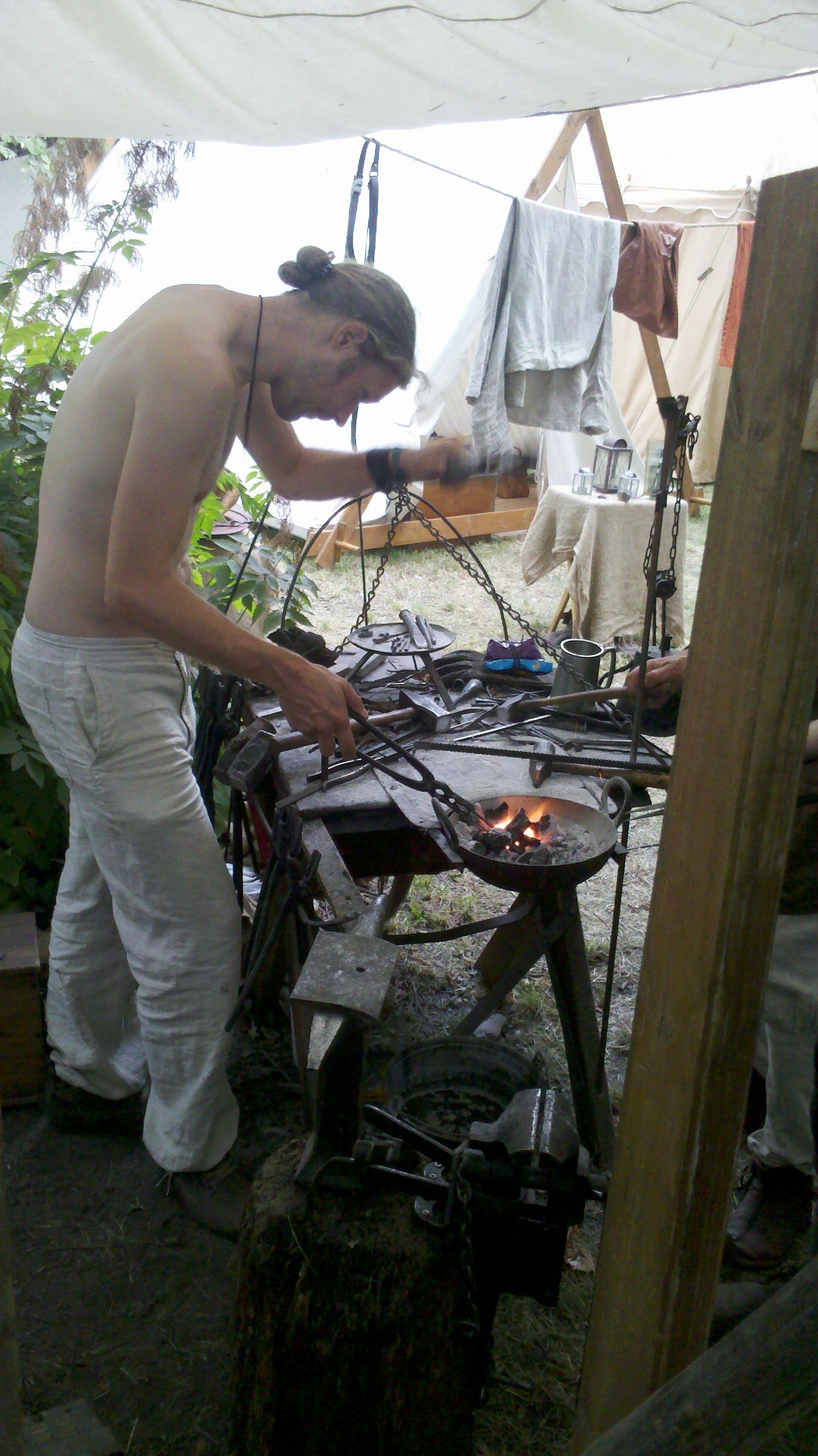
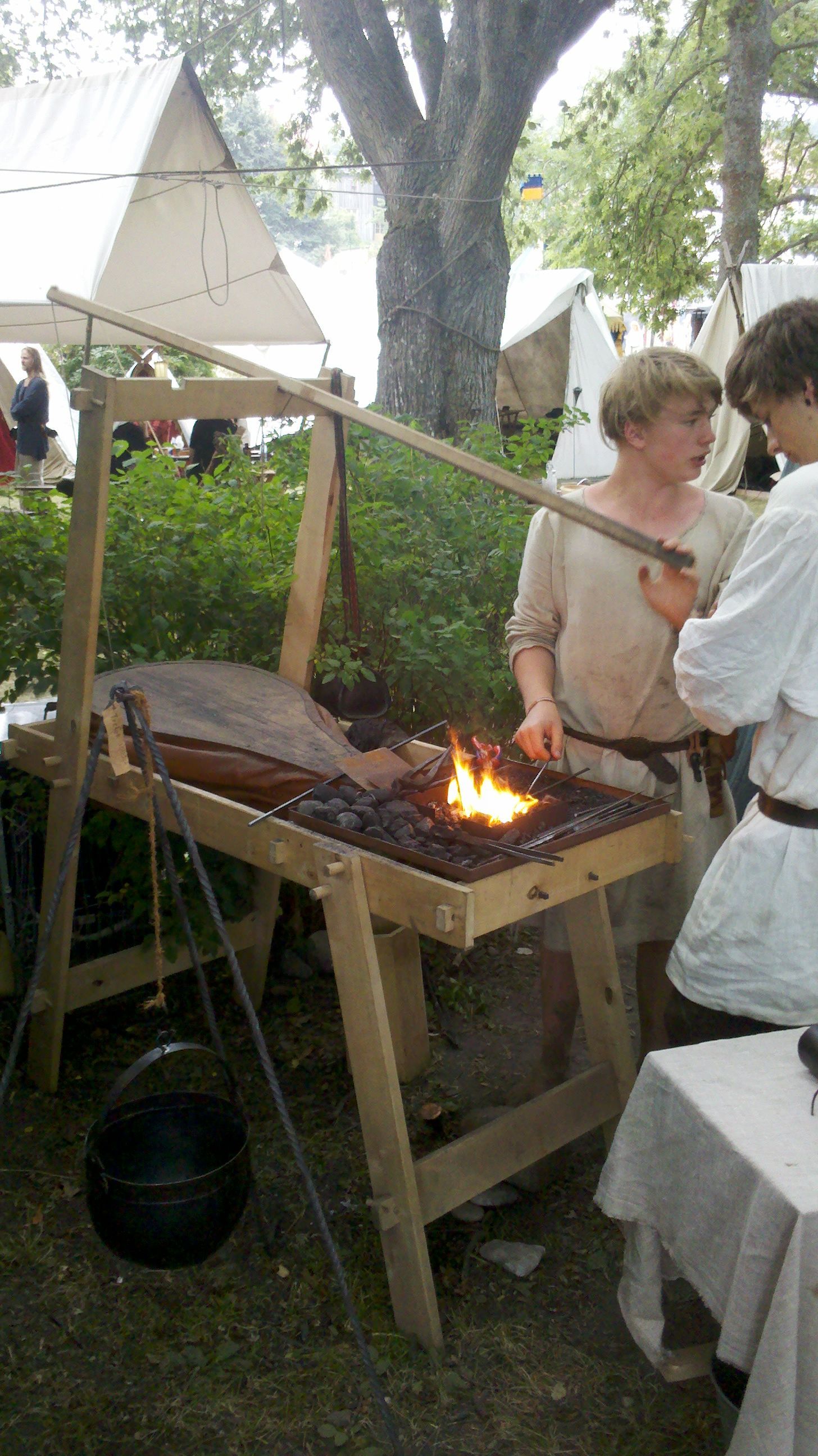

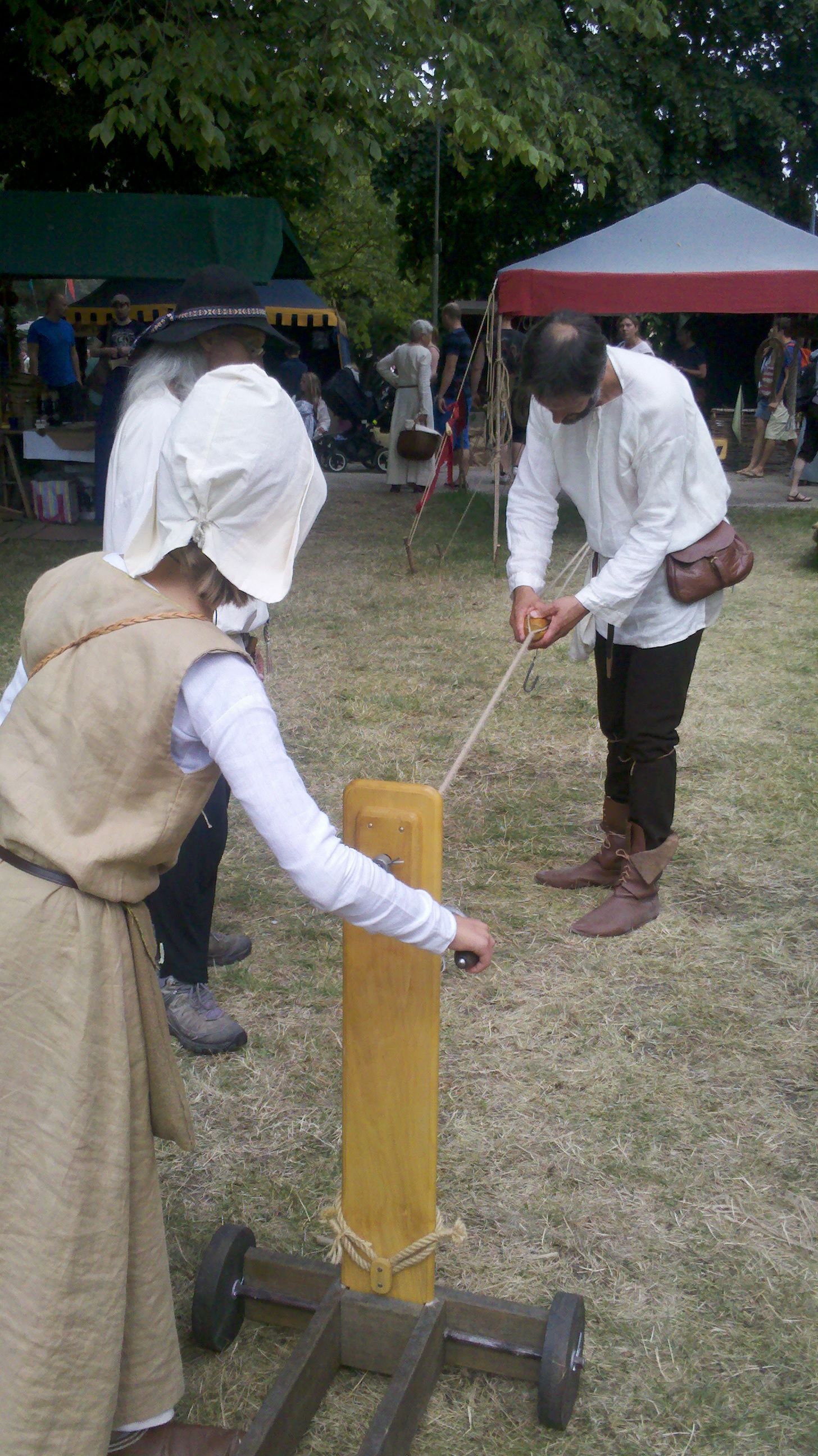


We set off from Gotland on our return journey to Poland. Our destination is Hel. It's about 170 miles. On a fast boat, with good wind, such a distance can be covered in less than a day. It took us over 4 days, with almost one whole day spent stationary in the middle of the Baltic. A total calm took over, only a dead wave rocked the yacht. However, we weren't sure how long our engine would hold out while motoring, and in case of its damage, we would have huge trouble approaching the port, so we decided, like sailors of old, to wait out the calm. It's in situations like these that one truly feels the dependency on nature.
The first night, the navigation lights stopped working. Old cables, fittings, everything was rotten. This became apparent when at dusk we dismantled lamps and repaired them with whatever we could. Makeshift, but enough for the lights to last until the end of that year's cruise. In the next season, we bought new lamps and simultaneously a spare set.
The wind, though not very strong, finally started to blow, and on the night of August 12, we approached Hel. We passed the rute of large ships and sailed from the side of the peninsula, which was on our starboard side. Unfortunately, it turned out that many smaller fishing vessels were sailing along the route. We tried to stay even closer to the shore to avoid constantly analyzing all the lights and positions of the vessels. Then, suddenly, a radar reflector of a fishing net buoy clanged into our boom. Zuza was standing close by and it looked terrifying, as if someone had jumped out of the darkness right at her. We decided it would be better to maneuver between the smaller units sailing along the route. The situation became much more difficult when Gdańsk appeared in the background. Distinguishing the lights of the vessels against the backdrop of the coastline’s cluster of lights became even more challenging. At one point, Kamil noticed how one of the lights, which had not been blinking, started to blink. We made an immediate turn and soon saw a small cutter passing us by. In this situation, the captain of the cutter reacted sensibly to our mistake.
We reach Hel after two in the morning and sleep like logs. The plan for the next day is Gdynia. The distance is small, so we're not in a rush, we set off around 4:00 PM and are there by 7:00 PM. We spend two days there and embark on the last leg of our cruise - back to Łeba.
Generally, the route goes smoothly, but we have the opportunity to observe one more potentially dangerous situation. As we passed Rozewie lighthouse, dusk was falling. We saw a tiny tugboat pulling a huge ship behind it. When it got dark, it turned out that the ship was completely unlit and eventually vanished into the darkness. It gave much food for thought on how one must analyze the lighting of tugboats or fishing vessels and translate it into a situational picture.
Thus ended our first voyage on Stubborn. We learned a lot and gained a desire for further travels.

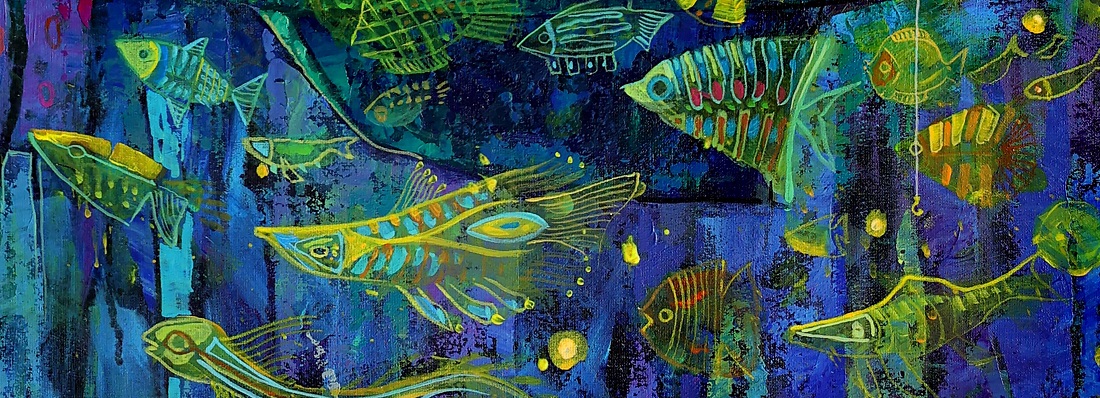
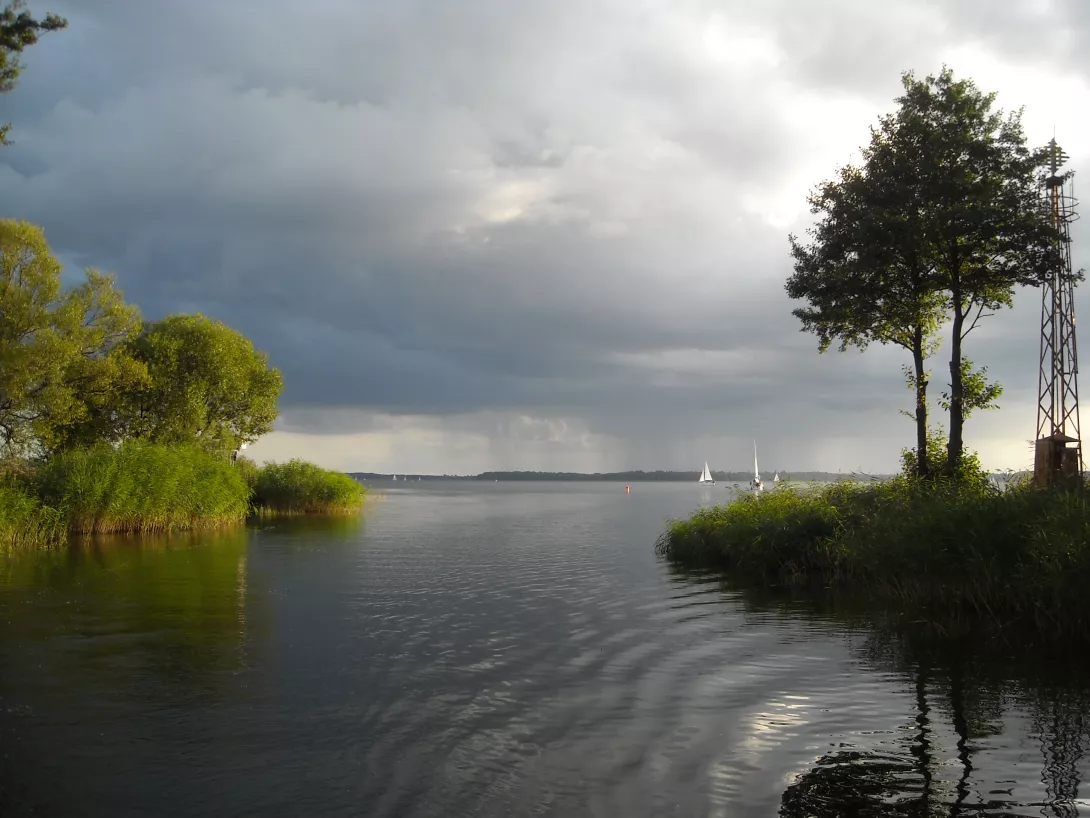
Comments